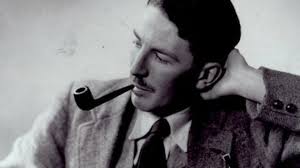Anyone who reads my ramblings knows that I admire engineers who made a big difference to our lives, yet seem to have never made the big press. Gordon Welchman is one such man. You probably have heard about Bletchley Park, the code breaking centre for the war effort and the likes of Alan Turing. The combined efforts from this establishment, in breaking enciphered Morse codes used by the Germans in WW2, is said to have shortened the war by at least 2 years. Little is spoken about Gordon.
In the late ‘30s, Gordon was a Fellow of mathematics at Cambridge College. By then, it was guessed that WW2 was likely. The boss at the Government Code and Cipher School (Bletchley Park), Alistair Denniston requested that Welchman join the team which included Alan Turing, Stuart Milner-Barry and Hugh Alexander. These four chaps realised that in order to have the edge over the enemy, signal intelligence, i.e. heads-up knowledge as to what was going on by the Germans was of massive value. Collectively, they wrote to Churchill, setting out the requirements for a huge increase in resources at Bletchley. Churchill reading this, stamped the letter with “Action this day”, in other words, do it now or else..
Germany had the Enigma cipher machine. This was a clever electro-mechanical system which encrypted the alphabet. It looked like a typewriter keyboard but had sets of wheels and lamps. To go into detail would fill the magazine up. To send a secure Morse message, the operator would set the encryption code of the day and type. Letter A would get converted to V for example and so on. The receiving machine, set to the same code would convert the letter V to A. This was used to send radio Morse to the German Air Force and land army units. As the Morse was sent via radio, anyone could listen, but without knowing the cipher code, it was rubbish.
Welchman looked at the task logically. He knew that in order to listen to what the Germans were saying, the enciphered codes had to be broken very quickly. He organised radio operators to listen to the radio Morse and try to see patterns that were repeated. He saw that there were formal communications between German radio operators, in Morse, which were in “plain” un-enciphered text. These conversations included hints as to their names, locations, military status and settings of the Enigma encryption machines. This sort of detail was incredibly useful. He saw that the cipher codes were changed at midnight every 24 hrs. This information was known as “Cribs”. This meant, that if the cipher code could be broken within a few hours, the whole day’s traffic could be decrypted…result, happiness. He also understood the importance of analysing the detail of the way the German radio operators worked. Their nicknames, style of Morse, their common phrases etc. This all added up to help understand what was going on. This was termed “Data Analysis”, the fundamentals of which are absolutely used today.
Welchman worked with Turing who had designed the “Bomb”. This was an electro-mechanical machine that could simulate the way in which the enigma machine worked. This machine would be configured using information gained by the Bletchley Park radio listening teams, Morse communications etc. The machine would run a few sentences through hundreds of thousands of possible encrypted codes. If an operator saw some plain ‘German speak’ coming out, the code for that day was broken and in theory, all German traffic was readable.
Code breaking machines at Bletchley Park continued to become more sophisticated and more efficient. Alan Turing’s machine was very much electro-mechanical. A brilliant ex GPO engineer, Tommy Flowers, had been instrumental in designing the first programmable computer using valves. This made processing the cipher codes much quicker. The machine was called Colossus. Again, there we go, Tommy Flowers. He needs to take a bow.
After the war, Gordon went to work at the Massachusetts Institute of Technology (MIT) in the ‘States, teaching ground breaking computing technology. He then joined MITRE, where his work in cipher analysis put him in the forefront of secure communications.
After retiring in the early ‘70s, he was retained as a consultant. He wrote a book “Hut six” which was about his time at Bletchley Park. He thought it was correct that people knew about what had gone on during the war years and how much the work there brought it to a sooner end. He was in ill health and the authorities hounded him, taking away his security status, funding and making his last few years a misery. He passed away in ’85.
An unsung hero, brilliant man. And, possibly why I am writing in English, not German.
Seth, Zeta Services.




